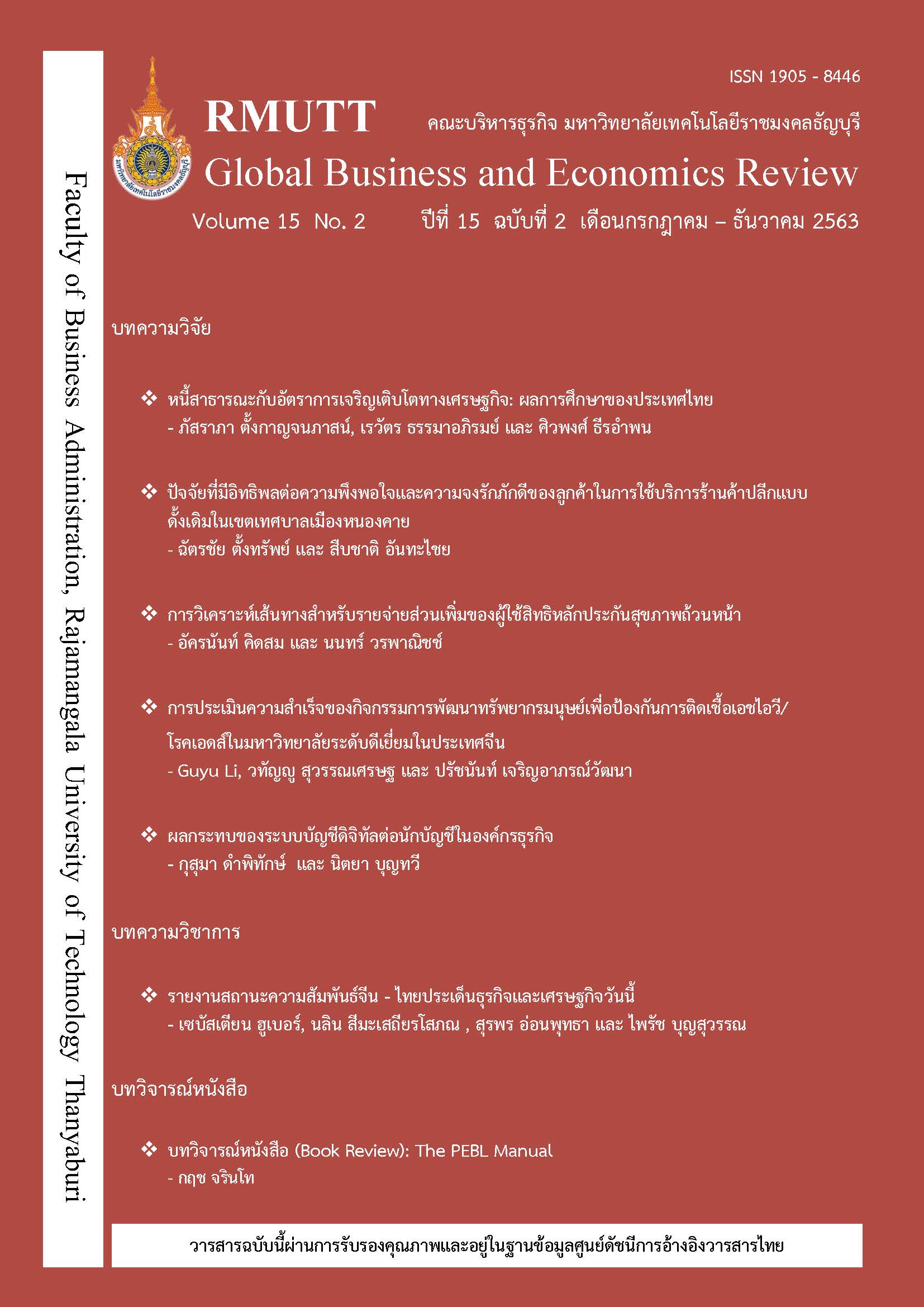PATH ANALYSIS FOR UNIVERSAL HEALTH COVERAGE BENEFICIARIES' ADDITIONAL PAYMENTS
Keywords:
Path Analysis, Universal Health Care Coverage, Additional PaymentsAbstract
The research on Path Analysis for Universal Health Coverage Beneficiaries' Additional Payments has the main objective of studying the facts and the relationships between various variables for additional payments on universal health coverage (UHC). By utilizing 400 sets of completed questionnaire data from the UHC beneficiaries with additional expenses, the path analysis shows that having other types of health insurance coverage directly affects the additional payments in terms of the "used to pay". As for patients with chronic illnesses, making treatment is generally not an emergency and not a serious illness. On the other hand, being a serious illness has a direct positive effect on the urgency for treatment, and thus such urgency leads to a tendency for patients to pay the additional payments. However, it cannot be concluded that there is a relationship between the size of the additional payments and the urgency of the case. It can be said that the groups of patients who are likely to pay more when using UHC include those with other types of health insurance coverage and groups with serious illnesses or having an urgency of treatment.
References
นนทร์ วรพาณิชช์ และอัครนันท์ คิดสม. (2563). ปัจจัยที่มีผลต่อการมีรายจ่ายส่วนเพิ่มของผู้ใช้สิทธิ หลักประกันสุขภาพถ้วนหน้าในการใช้สิทธิการรักษาจริง. วารสารบริหารธุรกิจมหานคร, 17(1), 73-105.
Corrieri , S., Heider, D., Matschinger, H., Lehnert, T., Raum, E.,& König, H. M. (2010). Income, education and gender-relatedinequalities in out-of-pocket health care payments for 65+ patients - a systematicreview. International Journal for Equity in Health, 9(20). Retrieved from https://doi.org/10.1186/1475-9276-9-20
Hajizadeh, M., & Nghiem, H. S. (2011). Out-of-pocket expenditures for hospital care in Iran: who is at risk of incurring catastrophic payments?. International Journal of Health CareFinance and Economics, 11(4), 267-285.
Leive, A., & Xu, K. (2008). Coping with out-of-pocket health payments: empirical evidence from 15 African countries. Bulletin of the World Health Organisation, 86(11). 849-856.
Poulsen, C. A. (2014). Introducing out-of-pocket payment for General Practice in Denmark: Feasibility and Support. Health Policy, 117(1), 64-71.
Séne, L. M., & Cissé, M. (2015). Catastrophic out-of-pocket payments for health and poverty nexus: evidence from Senegal. International Journal of Health Economics and Management, 15(3). Retrieved fromhttps://link.springer.com/article/10.1007/s10754-015-9170-4
Thuan, N. B. T., Lofgren, C., Chuc, N. T. K., Janlert, U., & Lindholm, L. (2006). Household out-of-pocket payments forillness: Evidence from Vietnam. BMC Public Health, 6(283). Retrieved from https://doi.org/10.1186/1471-2458-6-283
Downloads
Published
How to Cite
Issue
Section
License
The articles published in this journal are the intellectual property of their respective authors.
The views and opinions expressed in each article are solely those of the individual authors and do not reflect the positions of Rajamangala University of Technology Thanyaburi or any of its faculty members. All components and content of each article are the sole responsibility of the respective authors. In the event of any errors, the authors shall bear full responsibility for their own work.








